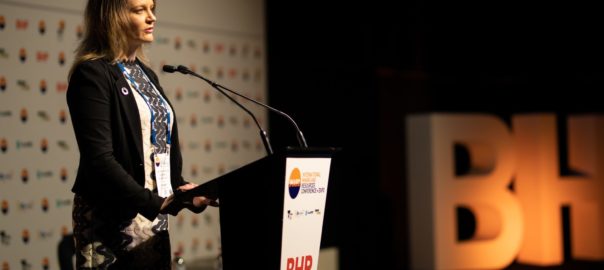Closing the gender gap in mining is not only a matter of equity, it also makes business sense, according to five Australian experts who will be addressing the International Mining and Resources Conference (IMARC) in Sydney in November.
As a whole, the mining industry is trying to address the under-representation of women in mining. Statistics highlighted by WIMnet (Women in Mining) NSW shows that women make up less than 20% of the mining workforce. Unfortunately, at an executive level it gets worse, with 6.7% of mining CEOs being female, compared with the national average of 19.4%.
IMARC organises say it will shine a light on the incredible contribution women bring to the mining industry, hosting a three-day event that will feature 111 female speakers.
Reflecting on the gender transformation sweeping the industry, Chair of WIMnet NSW, Lucy McClean, believes opening the door to more women represents an enormous opportunity for the industry to capitialise on the proven benefits of a diverse and inclusive workforce.
“The statistics are very clear, and they tell us that workplace diversity creates more inclusive supporting work environments, enhances teamwork, makes us more effective in service delivery as well as increasing productivity,” she says.
MinterEllison Partner and Head of Perth’s Workplace Law team, Kathy Reid, says: “We need to increase the presence of women in mining, but the industry is facing significant challenges and there’s not one easy answer. Improving mining for women will require significant and consistent cultural shifts across the industry but getting there will be difficult.”
Reid refers to this issue as the chicken and the egg conundrum: “You can’t really make women feel more comfortable in the mining industry until you’ve got greater numbers, but you can’t get greater numbers unless you make them feel more comfortable.”
METS Ignited General Manager, Kylah Morrison, agrees some great strides have been made to make mining more appealing to women, highlighting the power of leveraging tech and innovation.
“Equipment manufacturers are leading the way by breaking down barriers to entry, from simple things like hi-vis gear that is made for women, to major capital investments in heavy equipment,” she said. “Rather than the traditional burly bloke on the frontline, maybe it’s a remotely managed machine, which adds even more to the potential inclusiveness of mining.”
“Inclusivity is important, and that’s where innovation and technology is really exciting because it does make it more of an even playing field.”
AusIMM Independent Consultant, Giulia Savio, says it is clear the mining industry recognises the need to make the workplace more inviting for women, not just by moving away from a “male-only” culture, but by using innovation to create new opportunities in rewarding, highly paid and long-term careers.
However, Savio says the trend within the industry is positive, and applauds the fact that IMARC 2022 is taking a strong focus on the development of female leadership in the sector, and will feature record numbers of female delegates, speakers and panellists.
“We’re not there yet,” she says. “To have true diversity and to realise the value of that diversity, you need inclusivity. In order to improve the industry, leaders need to look at making the sector more friendly and inviting for all. This might mean greater diversity in teams, equipment that can be used by someone with a disability, or more opportunities for flexibility in office based or site-based roles.”
Agnico Eagle Vice President of Corporate Affairs in Australia, John Landmark, echoes this sentiment, outlining the need to tap into a far broader spectrum of talent to shift the idea of the industry being male dominated to being an industry that is in touch with society’s expectations.
“We’ve got to change this, and we’ve got to get this right,” Landmark said. “We must make the workplace more attractive for women and society as a whole.
“I am so excited that these challenges are such a major focus at IMARC and gives us an opportunity to improve the industry for everyone. The ideal workplace is where everyone can be themselves and contribute to the team environment – people of all diverse backgrounds and makeups.
“Frankly, if you make the industry more attractive to women, you improve the industry for all.”
IMARC, organisers say, is the most significant in-person gathering of Australian and international mining and resources representatives in almost three years and is a key forum to addressing the most challenging issues facing the industry. The conference will be held November 2-4 at the Sydney International Convention Centre and will feature over 450 speakers across six concurrent conferences covering the energy transition, rising costs, skills shortages, diversity within the resources sector and more.
International Mining is a media sponsor of IMARC 2022








